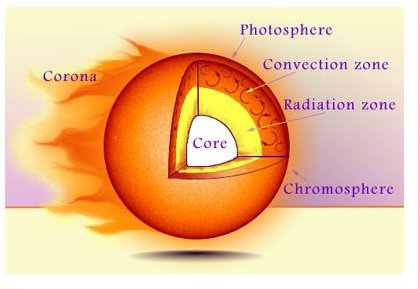Red Dwarf Protostars? Learn the Differences between Red Dwarfs and Protostars
Star Formation
The star formation sequence takes millions of years to occur because it starts from the accumulation of matter in a region of space, which has large quantities of dust and gas. The accumulation of matter over time can coalesce to become a protostar. Over a period of hundreds of thousands or millions of years, the protostar reaches a stage where it becomes a T Tauri star. If it reaches critical mass it will become a star and enter the main sequence of stars.
The Radiative Zone and The Convection Zone
Stars are ordinarily understood by their luminosity and thermal energy. They radiate heat and light. The process for an object to become a star, or failure to become one is better understood through the processes in the radiative and convection zones in a star. The radiative zone is found near the core of a star, and photons, which are the energy by-products of a fusion reaction between hydrogen atoms, escape to travel to the convection zone. This process can take over one-hundred thousand years, as the photons bounce from atom to atom in a random manner.
The convection zone is made up of plasma, a highly ionized gas that is electrically conductive. It is the area outside of the radiative zone and it absorbs many of the photons that make it out of the radiative zone. The convection zone is very turbulent. It gets increasingly cooler as one goes from the radiative zone to the outer region of the convection zone. The temperature is very hot; indeed, in the radiative zone it approaches 5 million degrees Kelvin, whereas the convection zone is a cool and moderate 2 million degrees Kelvin.
The radiative-convection process is important and must exist for the protostar to become a full fledged star.
Source: https://www.universetoday.com/guide-to-space/the-sun/radiative-zone/
ProtoStar
Stars are born in nebulas, which are made up of hydrogen and helium. A protostar is surrounded by this dense cloud of gas and dust which can be seen by the large amounts of infrared and microwave radiation they emit. The dense clouds of dust and gas normally block visible light. Varying amounts of dust and gas can, through gravitational effects**,** begin the long slow process of mass accumulation, or accretion as astronomers call it, forming the protostar. This could take upwards to millions of years to occur.
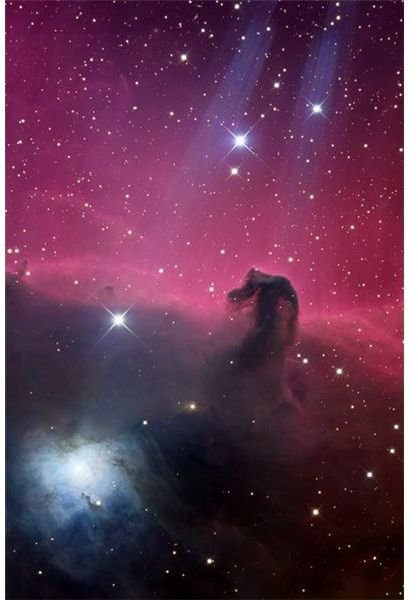
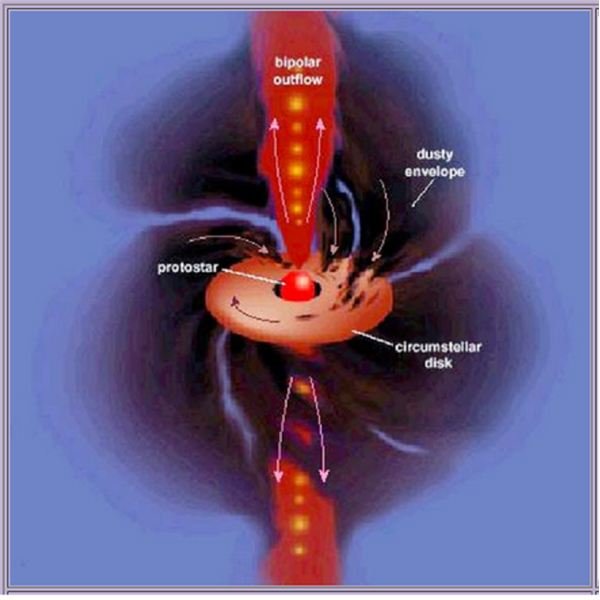
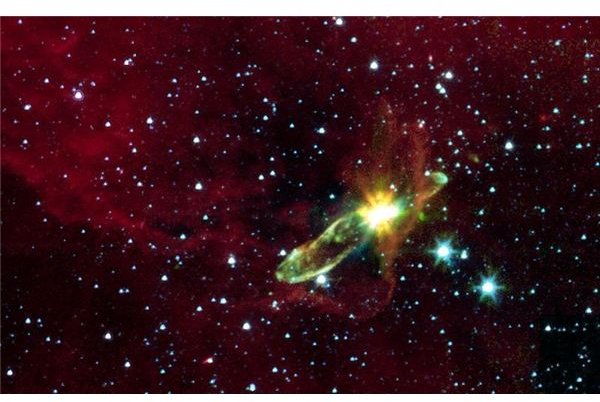
Protostar Science: www.daviddarling.info/.../P/protostar.html
ircamera.as.arizona.edu/MIRI/starform.htm
Source: zuserver2.star.ucl.ac.uk/~idh/apod/ap051130.html
T Tauri Stars
The path a protostar takes to becoming a main sequence star is interrupted by it first becoming a T Tauri star. A protostar stage continues as long as material is still falling inward. After about 100,000 years or so, the protostar stops growing and the disk of material surrounding it is blown away by destroyed by radiation. It then becomes a T Tauri star, and is visible to Earth-based telescopes.
This is a very young, lightweight star, with an age less than 10 million years old and has an accumulated mass that is less than 3 solar masses. It is still undergoing gravitational contraction building up pressure and temperature but it represents an intermediate stage between a protostar and a low-mass main sequence star like the Sun.
When enough mass has accumulated, the process of fusion begins and a struggle for equilibrium starts. The nuclear fusion causes the atoms to radiate heat and light, creating pressure directed outward, but the increased mass, increases the pull of gravity, which causes the star to collapse, an inward process.
It is the balance of these inward and outward forces that results in equilibrium. If a point of critical mass is not reached the protostar becomes a brown dwarf. But if critical mass is reached, the protostar becomes a star and it moves into the main sequence.
The nearest T Tauri stars can be located in the Taurus molecular cloud and the Rho Ophiuchus Cloud. They are not close by: both are located nearly 460 light-years away. The name T Tauri comes from the first object recognized in the Taurus constellation with these properties.
Red Dwarf
A red dwarf is a star with very little heat or light emanating from it. They are a main sequence star but have less than one-half of the solar mass of our Sun and do not have a radiative zone between their core and the convection zone. But they are very numerous, in fact red dwarf stars are thought to be the largest population of stars in the galaxy.

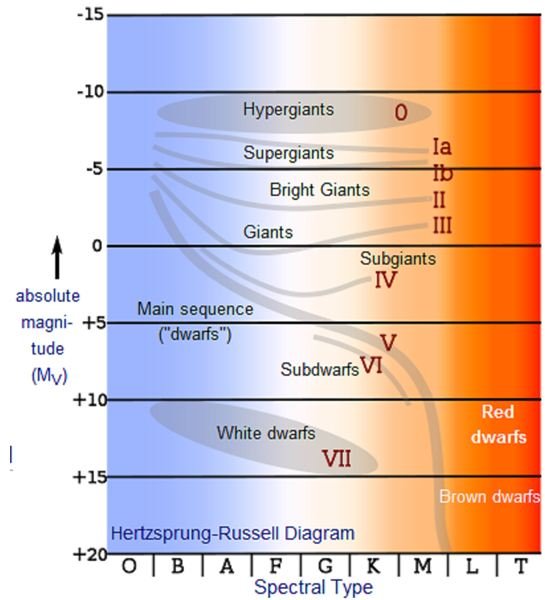
Because red dwarfs have such low mass, their fusion reactions will not generate the type of brilliance and luminosity typically seen on a star. Thus these stars emit light that is 1/10,000th the luminosity of the Sun.
Image: https://commons.wikimedia.org/wiki/File:HR-sparse.svg
Image: https://en.wikipedia.org/wiki/Main_sequence
Nearby Red Dwarf Stars
At a distance of 4.22 light years from the Sun (roughly 25 trillion miles) sits Proxima Centauri, the closest star to the Sun. This star is a red dwarf.
Other Red Dwarfs in the celestial neighborhood include: Lacaille 8760 at 12.9 light years; Lacaille 9352 at 10.7 light years, and Lalande 21185 at 8.3 light years, and Barnard’s Star at 5.9 light years distant.
Other Red Dwarfs https://kencroswell.com/thebrightestreddwarf.html
Summary
Protostars come from nebulae that coalesce into objects, which will after 100 million years, form into stars. The sequence is: nebula to protostar, to T Tauri, to a Main Sequence star. A red dwarf is a main sequence star, just like our Sun is. Red dwarf’s are very common in the Universe and have an estimated life time of 10 trillion years, far longer than the current estimated for the age of of our Universe 13.7 billion years. This means that red dwarf stars will continue to burn off their hydrogen for a long time after most other stars have died out.
This post is part of the series: Stars and Galaxies
In this series of articles we discuss how stars form, the various kinds, and how they lead up to galaxy formation. We also look for the largest known star in the visible universe.
